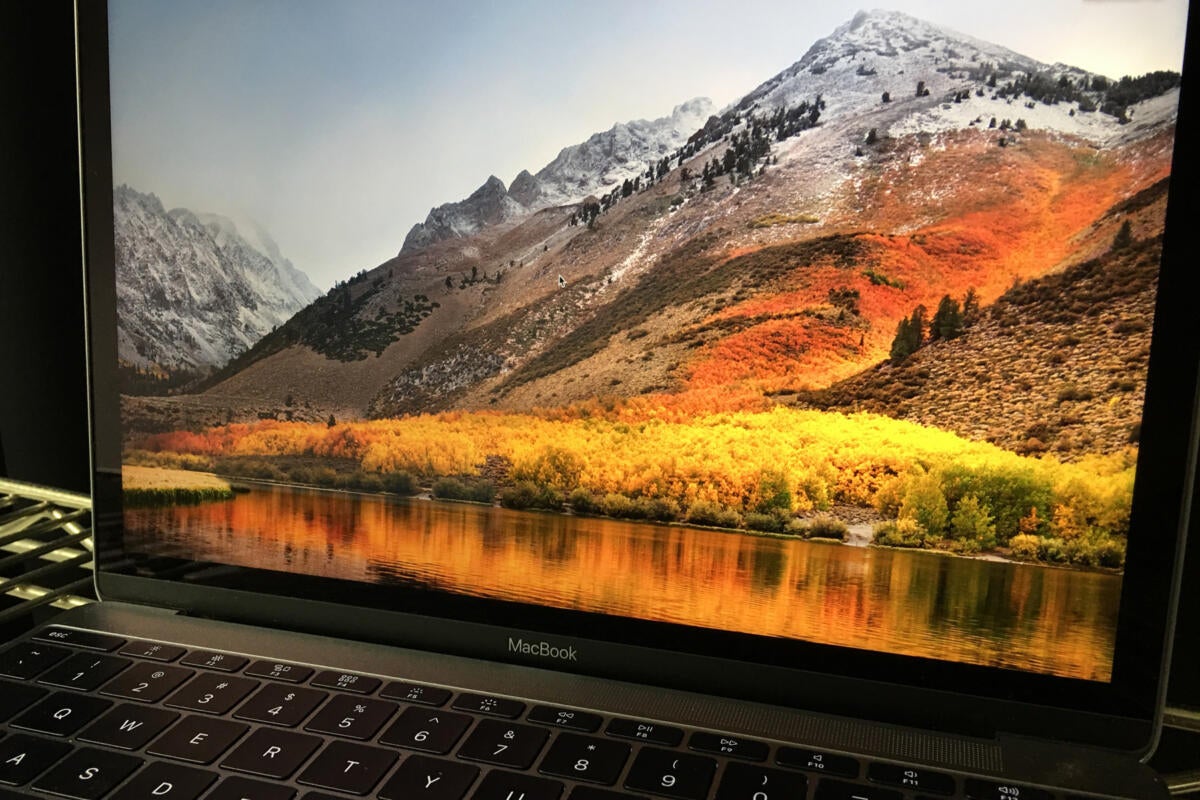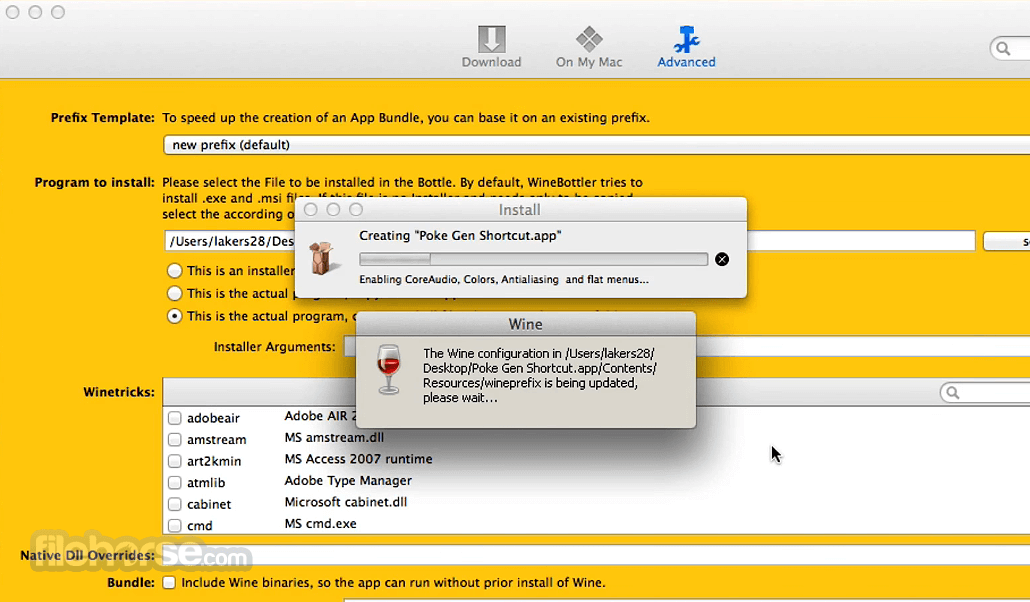MacOS High Sierra macOS High Sierra is the next significant drop of the Mac operating system. It was announced on WWDC of 2017, and the name High Sierra refers to the High Sierra area in California. The macOS High Sierra is the successor of the macOS Sierra. Class Compliant Devices “Class compliant” devices do not require a driver or any additional software to operate on your Mac. With no known exceptions, class-compliant devices are compatible with macOS 10.13 High Sierra, but please check the manufacturer’s website for official compatibility information before proceeding. Apps: the Mac app store is smart enough to download the latest supported version for the OS. Even now, Pages etc on High Sierra are already not the latest version. I think that's about it. The internet browser is the most critical app as it's our main windows to the internet, so that's the one app that I really want to not be left behind.
High Sierra is an update of MacOS which focuses mostly on back-end developments and a higher level of user security. As such, this operating system lays a foundation for future upgrades.
Stay safe
In essence, High Sierra took what was good with Sierra and developed it into a more comprehensive software.
High Sierra emphasizes the already-existing benefits of MacOS previous system, Sierra. There are few bells and whistles, but the changes are noticeable and positive. The Apple file system is the most significant feature it brought. It enables the storage and encryption of a large number of files. Thus, it boosts performance and helps manage device memory issues.
Apple also introduced new formats for video and photos in this version. These formats compress data - that’s a benefit as files can get huge with ever-rising resolutions. They added support for virtual reality headsets as well.
Besides that, when it comes to Safari, Mac search engine, there are some notable improvements with the update. The users can now control annoying auto-play videos, prevent tracking, and more. There are also notification controls, and you will experience a boost in performance, too.
The most noticeable changes took place in Apple’s Photo App, though. It went through a total revamp both visually in its interface and terms of tools and functions available. Many other discreet changes happened all over the system.
Where can you run this program?
If you’re running Sierra on your Mac, you will be able to run this one as well.
Is there a better alternative?
Yes. Mojave, the newest version of MacOS, brought even more improved features to the table. However, if you can’t run it on your device, this is the second best.
Our take
High Sierra is not the shiniest upgrade Apple brought, but it’s one that sets the stage for new upgrades to come. Even out of that context, it’s a great operating system.
Should you download it?
Yes, if your device can support it. The new options and better security settings are worth getting.
10.13
The time Apple launched its new macOS Mojave, it accompanied some influential selling focuses: Dark Mode to change your work area with a slick dark color plan, Continuity Camera to have photographs taken on your iPhone, in a flash show up in Mac records, and Stacks to limit your work area by sorting out documents, to give examples, which are quite a few.
In any case, it’s not every extravagant element and effective work processes. The Developer Preview and beta renditions of macOS have some bugs and flaw-ridden — both cause unforeseen errors and irregular crashes that make working on it disappointing, to point out the least. Also, the truth hitting us hard on the face is that change isn’t in every case great. Some of the time new things don’t regard you just as the old things did. So yes, I wager your old macOS High Sierra felt agreeable it did everything better!

On the off chance that you downloaded macOS Mojave to just check out the newly introduced OS and now you just want to get rid of it, or probably it doesn’t work with a portion of your applications, and you desperately want to downgrade from the latest macOS Mojave 10.14 to macOS High Sierra 10.13, fortunately, it’s conceivable. The terrible news, however, is that it’s a significantly long procedure with a bunch of various steps.
Read further on to get a clear understanding of the various methods available to downgrade macOS Mojave to macOS High Sierra.
In the event that you’ve concluded that you are still willing to return to High Sierra, follow the means underneath. Also, keep it in your mind that the process involved in downgrading is very entangled and tedious, so attempt to show restraint.
Also Read:-How to downgrade from macOS Catalina to macOS Mojave

Back-up all the Data and Stuff Present on your Mac
You ought to back up your Mac before you start any significant procedure, and ideally, you should back-up all your data before proceeding to install Mojave. In case you’re uncertain how to back up your Mac, you can follow the steps provided in this write-up. Be that as it may, any documents you’ve utilized or have been dealing with since you downloaded Mojave won’t be up to date on that backup, so you have to duplicate those to an external hard drive or on a cloud storage administration like iCloud, Drive or Dropbox. Do not proceed further until you’ve replicated those documents.
Keep a note of all your Passwords and Important Keywords
The procedure involved in downgrading wipes everything from your hard drive, including passwords, permit keys, license keys, and settings. On the off chance that you have a reinforcement of your Mac from before you upgraded to Mojave, you ought to have the option to relocate quite a bit of that information back to your Mac once you’ve reinstalled High Sierra.
In any case, it’s a smart thought to ensure you have a note of all of your important passwords, settings, permit keys and other information you’re probably going to require in the future. If you utilize a password supervisor that syncs with different gadgets, you could employ that to store every one of the information you need. Or simply any cloud-based note-taking instrument that encrypts notes will do the needful.

It’s likewise a smart thought to take screenshots of settings, to make it simpler to upload them up later on. You should store these on an external drive, or on cloud storage space.
Uninstall and Delete Mojave
- Ensure that your Mac is connected to the internet.
- Click on the Apple menu and press the Restart button.
- Hold down Command + Option + Shift + R to boot into recovery mode. You can also boot into Recovery mode by pressing together Command + R. However, adding Option + Shift will allow you to reinstall High Sierra, provided your Mac came with it installed.
- Click on Disk Utility in the macOS utility window.
- Select the disk with Mojave on it.
- Click on Erase.
- Name the disc, choose Mac OS Extended (Journaled) or APFS as the file format.
- Quit Disk Utility.
The most effective method to downgrade from macOS Mojave if your Mac is delivered with High Sierra
- Delete your start-up disk as described above- you have to do that first since Recovery mode won’t introduce an older redemption of the OS over a more up to date form.
- From MacOS Utilities, click on Reinstall macOS.
- Press Continue.
Step by step instructions to downgrade from a Time Machine reinforcement
On the off chance that you created a back-up of your Mac just prior to installing Mojave, you’re quite lucky. You can utilize that to reinstall High Sierra. Ensure your Time Machine disc is associated with your Mac, either directly or over a network system, before you begin.
- Delete your start-up disc, as depicted previously.
- In the macOS utility window, pick Restore from Time Machine Backup.
- If your backup is on an external disk, select it. If it’s on a Time Capsule or network disk, select it and click on Connect to Remote Disk.
- Enter your name and password for the disk, if necessary.
- Select the date and time of the backup you want to re-establish on your system.
- Adhere to the on-screen guidelines.
Downgrade using a bootable High Sierra Installer
In the event that your Mac didn’t come with High Sierra and you don’t have a Time Machine reinforcement, you’ll have to make an installer disc. Apple used to make every single previous adaptation of macOS accessible in the Purchased tab of the Store, but the latest rendition there now is El Capitan.
Pokegen For Mac High Sierra Vista
In case you’re downgrading before the full public arrival of macOS Mojave, High Sierra is as yet accessible in the App Store. You can discover it on the left-hand side of the principle App Store window, or via scanning for it.
Snap-on the Download button on the App Store page and wait for the OS to begin downloading. On the off chance that the installer automatically launches when it’s downloaded, quit it.
- Open the App Store, then download macOS High Sierra installer (5 GB size)
- Quit the installer once it opens. Go to the Application folder to find the Install macOS High Sierra app. Right-click on it and choose Show Package Contents. Go to Contents > Resources > create install media.
- Attach a USB drive (of approx. 16 GB) to your Mac. Ensure it does not contain any important data; copy the data if required, to an external storage drive to avoid data loss.
- Go to Applications > Utilities. Double-click Terminal to open the app.
- Type sudo <drag and drop the “create install media” icon to add its path> – –volume <drag and drop the USB drive from Desktop to add its path>
- Click on Return. Type the Admin Password. When asked to erase the drive, type Y then click on Return. Wait till the Terminal displays done, then exit Terminal.

Reinstall macOS High Sierra and Restore the Factory’s Settings
- Go to the Apple menu, pick Restart, and hold down the Option key.
- At the point when the choice to choose a boot disc shows up, pick the installer disc you just made.
- High Sierra will begin installing on your Mac.
- At the point when it’s done, your Mac will restart and Start-up Assistant will show up.
- Go through the steps to set up your Mac.
Pokegen For Mac High Sierra 10.12
In the event that you made a non-Time Machine reinforcement of your Mac before installing Mojave, you can utilize the reinforcement device to re-establish your Mac to the state it was in when you made the back-up.